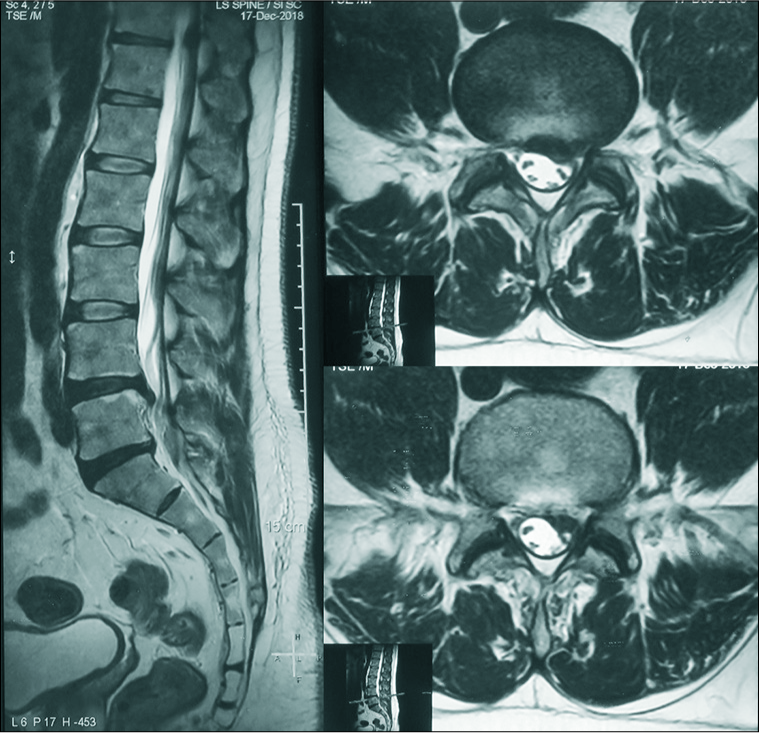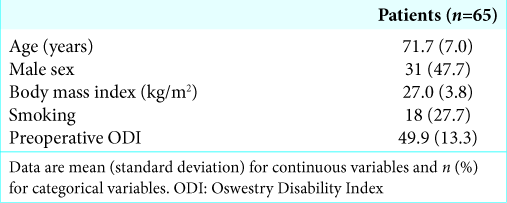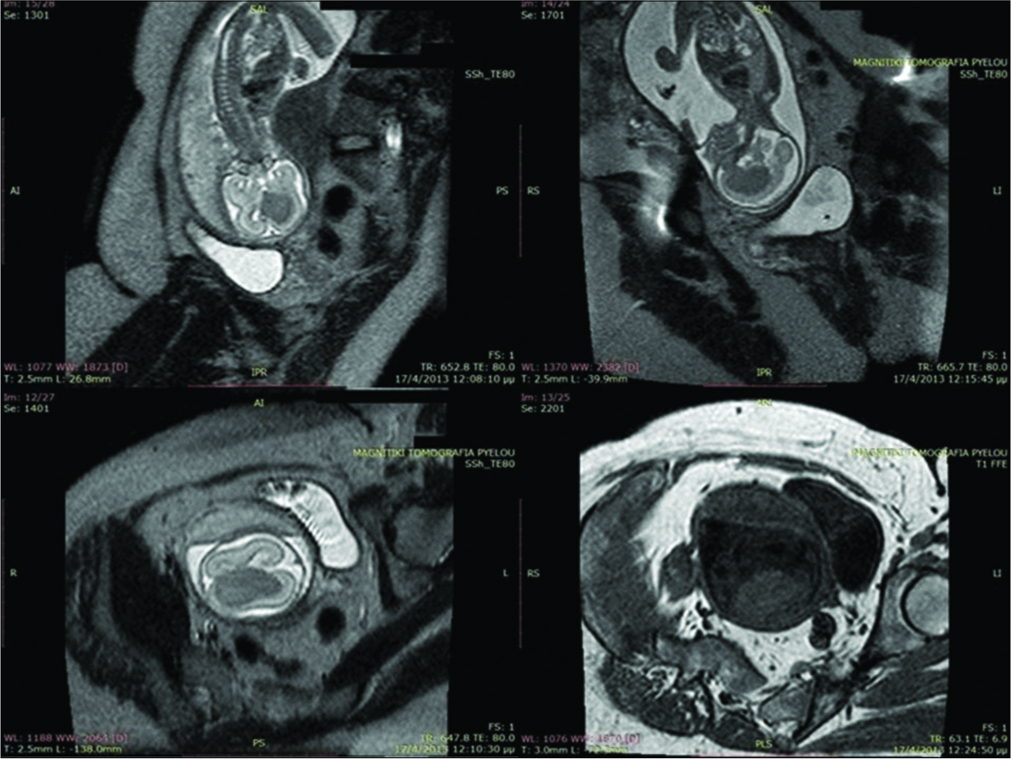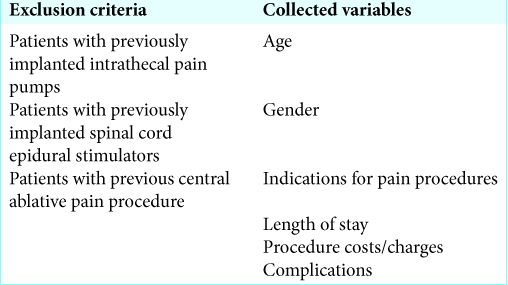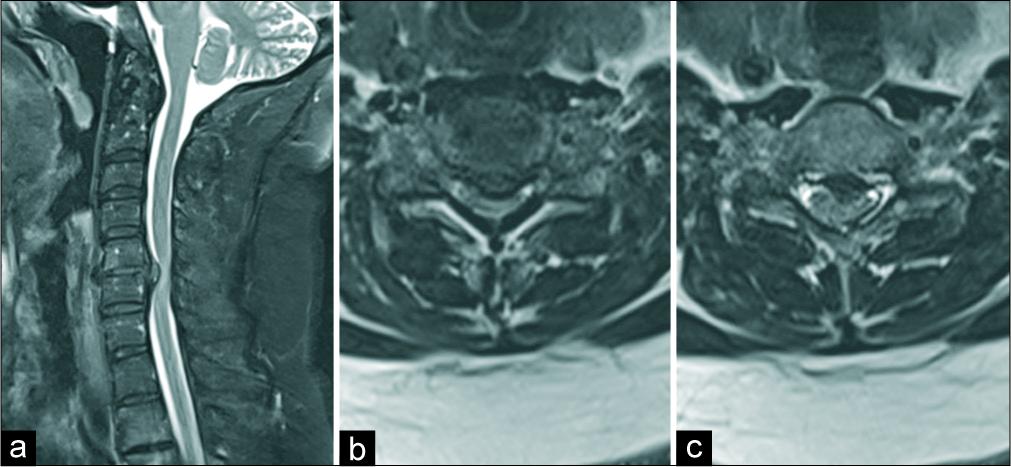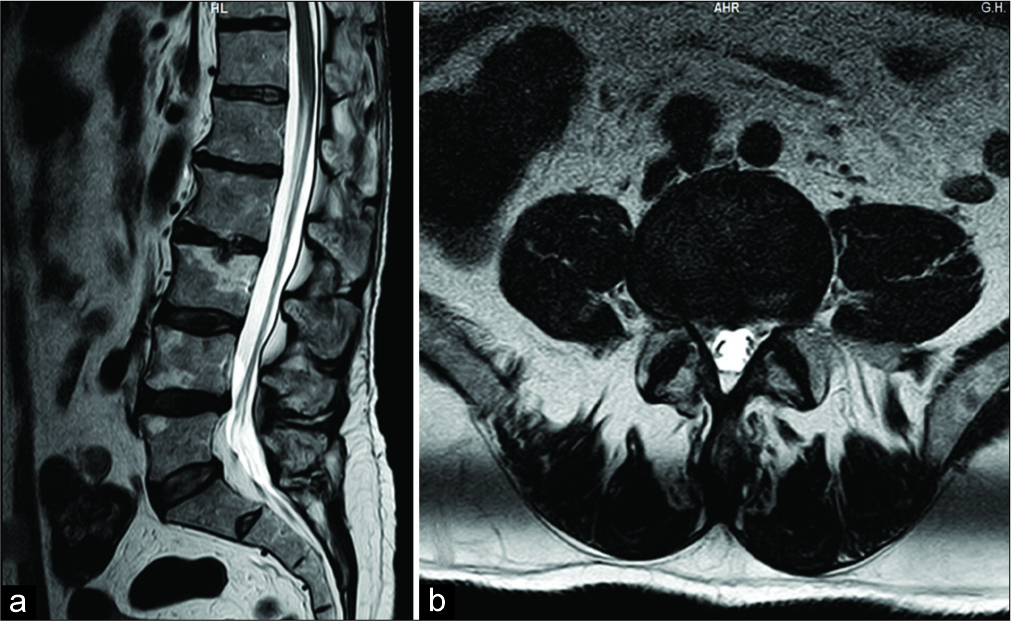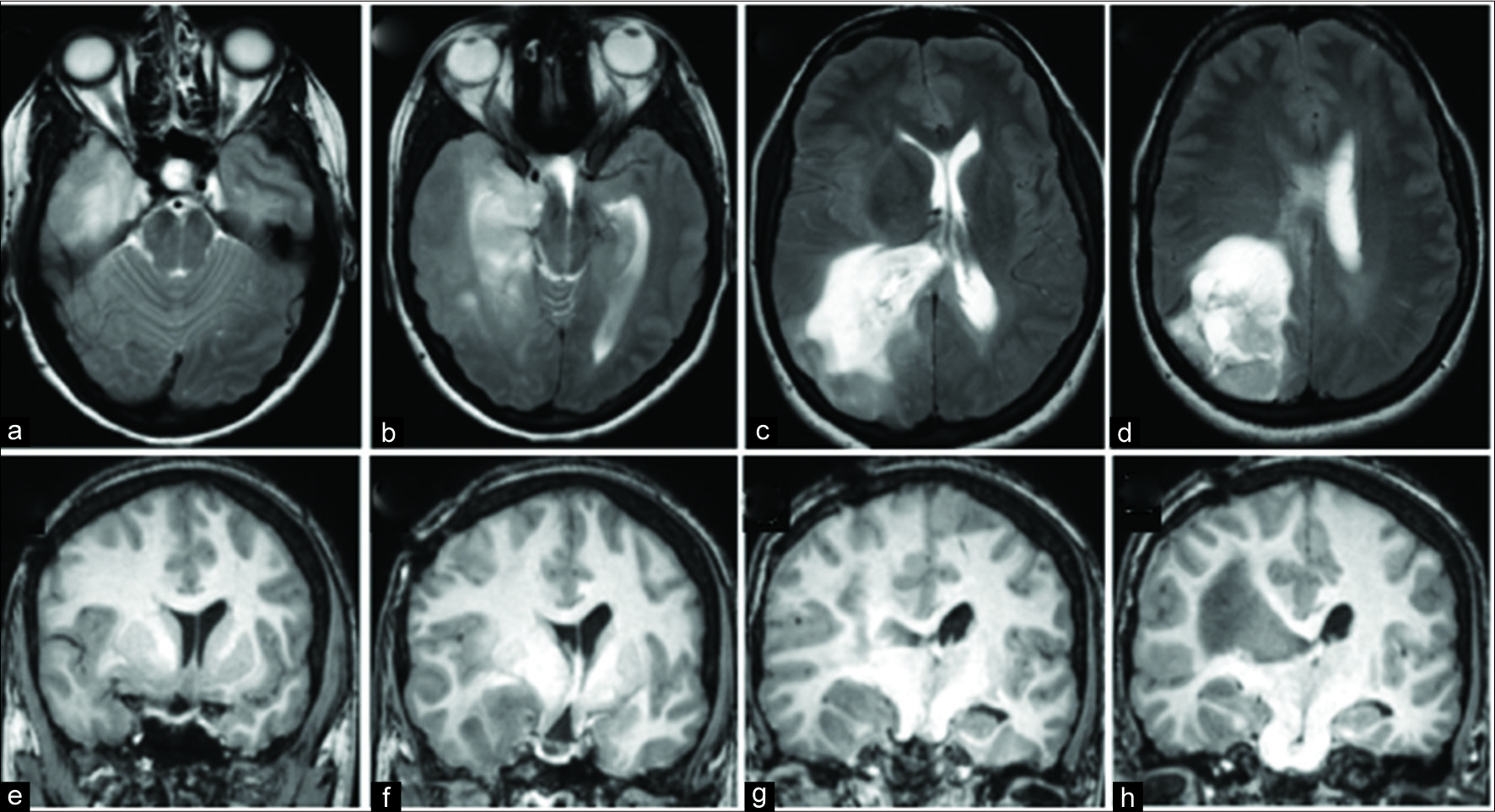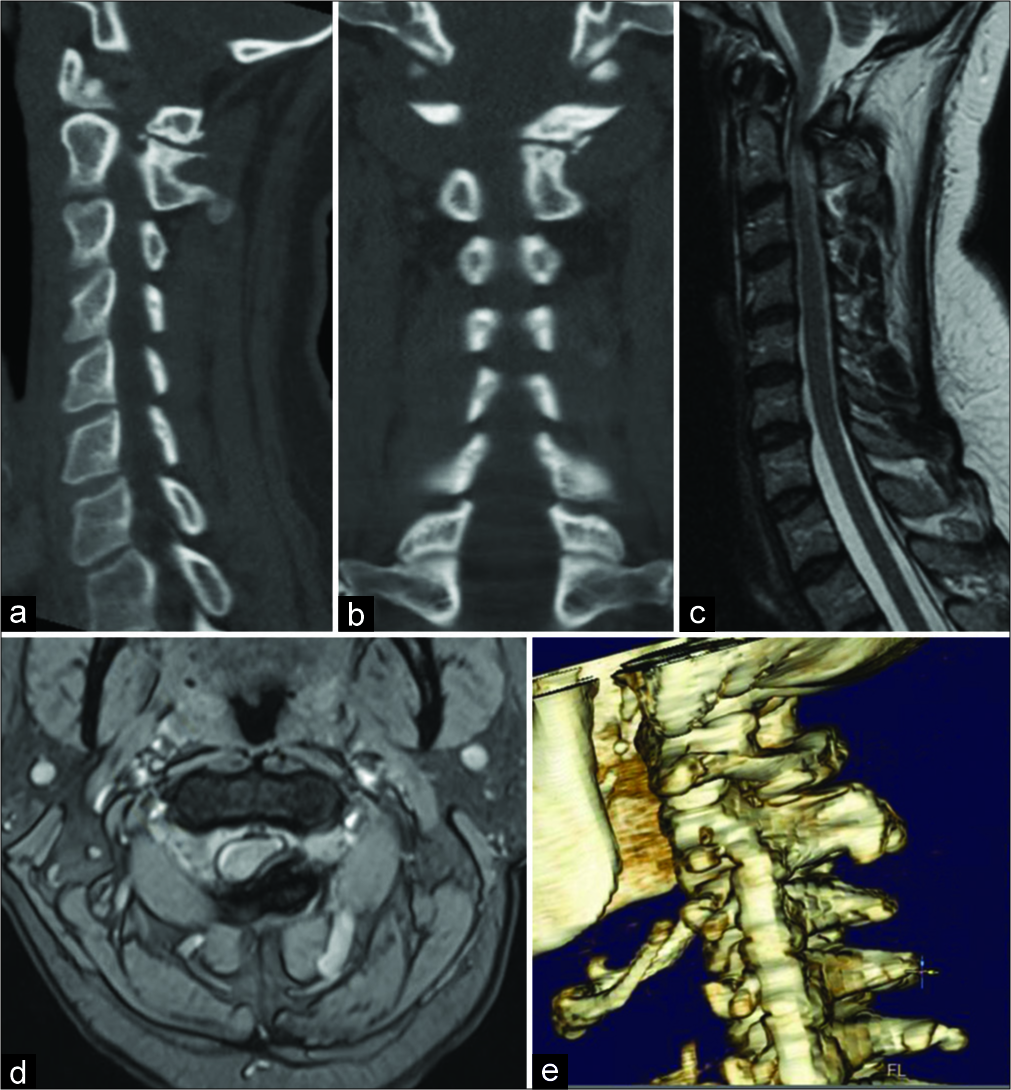Erratum: Orbit ossifying fibroma – Case report and literature review
Date of publication: 28-Feb-2020
Stenotrophomonas maltophilia spondylodiscitis following lumbar microdiscectomy mimicking a cotton granuloma: A case report and literature review
Date of publication: 25-Feb-2020
Background:Vertebral osteomyelitis caused by Stenotrophomonas maltophilia is very rare. There are only two cases reported in literature. Here, we present a 48-year-old immunocompetent male who, following a lumbar microdiscectomy, developed postoperative spondylodiscitis due to S. maltophilia that mimicked a cotton granuloma.
The relationship between preoperative predictive factors for clinical outcome in patients operated for lumbar spinal stenosis by decompressive laminectomy
Date of publication: 25-Feb-2020
Background:Our hypothesis was that by identifying certain preoperative predictive factors, we could favorably impact clinical outcomes in patients undergoing decompressive surgery for lumbar spinal stenosis (LSS).
Fetal subependymal giant cell astrocytoma: A case report and review of the literature
Date of publication: 25-Feb-2020
Background:Subependymal giant cell astrocytomas (SEGAs) appear approximately in 10% of patients with tuberous sclerosis. These tumors are most commonly diagnosed in childhood and adolescence, with in utero diagnosed SEGAs being an extremely rare entity.
Cost comparison among punctate midline myelotomy, intrathecal pain pump, and spinal cord epidural stimulator
Date of publication: 18-Feb-2020
Background:Invasive pain procedures can be valuable tools to manage chronic pain. Here, we compared the costs of three procedures used to address chronic pain; punctate midline myelotomy (PMM), placement of a spinal cord stimulator (SCS), or placement of an intrathecal pain pump (ITPP).
Utilizing vertebral body autograft for anterior cervical corpectomy/fusion
Date of publication: 18-Feb-2020
Background:There are numerous ways to reconstruct cervical vertebral bodies and achieve arthrodesis following anterior cervical corpectomy and fusion (ACF). However, device and donor site complications abound. Here, we describe a novel technique for performing ACF using the vertebral body itself as a structural autograft.
The role of full-endoscopic lumbar discectomy in patients with neurodegenerative disorders: Technical note and short literature review
Date of publication: 14-Feb-2020
Background: Motor neuron disease includes a spectrum of neurodegenerative diseases with progressive courses and unfavorable prognoses. Here, we described a patient with a lumbar disc herniation (LDH) and isolated bulbar palsy (IBP), who successfully underwent a transforaminal full-endoscopic discectomy (TFED) without incurring the added risks of general anesthesia.
Parietal transventricular approach for medial temporal glioma: A technical report
Date of publication: 14-Feb-2020
Background: Medial temporal lobectomy (MTLy) poses a surgical challenge due to convoluted anatomy of medial temporal lobe (MTL). Various approaches have been described to access MTL for removing various pathologies. We, hereby, describe the parietal transventricular approach for removing a concurrent medial temporal glioma in a patient with recurrent parietal glioma.
Adaptive radiosurgery based on two simultaneous dose prescriptions in the management of large renal cell carcinoma brain metastases in critical areas: Towards customization
Date of publication: 14-Feb-2020
Background: The long-term benefits of local therapy in metastatic renal cell carcinoma (mRCC) have been widely documented. In this context, single fraction gamma knife radiosurgery (SF-GKRS) is routinely used in the management of brain metastases. However, SF-GKRS is not always feasible due to volumetric and regional constraints. We intend to illustrate how a dose-volume adaptive hypofractionated GKRS technique based on two concurrent dose prescriptions termed rapid rescue radiosurgery (RRR) can be utilized in this particular scenario.
Unilateral atlantoaxial pseudoarticulation: A case report, literature review, and proposed mechanism
Date of publication: 07-Feb-2020
Background: Atlantoaxial pseudoarticulation rarely involves the cervical spine, and its etiology is unclear. In theory, pseudoarticulation is comparable to Bertolotti’s syndrome in the lumbar spine or may be attributed to an aberrant focal fusion between C0-C1-C2 that occurs during the gastrulation of embryologic development.


